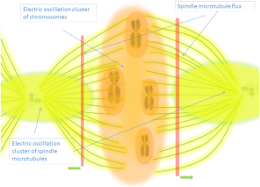

ELF - Electromagnetic Fields Reviews
Papers that review the mechanisms and effects of applied ELF-EMF
Extremely low-frequency electromagnetic fields (ELF-EMFs) have demonstrated wide-ranging effects on biological systems, influencing cellular signaling, tissue repair, and systemic coherence. This section synthesizes insights from existing systematic reviews, emphasizing the therapeutic potential of ELF-EMFs in regenerative medicine, oncology, and neuroprotection. ...
Particular focus is placed on non-thermal mechanisms, very low-intensity exposures, and the resonance phenomena linked to natural frequencies like the Schumann resonance.
ELF-EMFs, ranging from 3 Hz to 300 Hz, represent a promising area of biophysical research with significant implications for health and medicine. While their effects span multiple biological levels, from molecular to systemic, systematic reviews highlight consistent themes, including modulation of bioelectric fields, enhanced cellular signaling, and tissue repair. This section integrates findings from reviews and experimental studies to provide a comprehensive understanding of ELF-EMF applications.
Mechanisms of Action:
Non-Thermal Effects:
ELF-EMFs influence cellular processes without inducing significant heating. Key mechanisms include modulation of ion channels, resonance effects, and alignment of bioelectric fields (Ross et al., 2019).
Ion Cyclotron Resonance:
Resonant interactions between ELF-EMFs and specific ions, such as calcium and magnesium, enhance intracellular signaling and metabolic regulation (Foletti et al., 2012).
Natural Frequencies and Coherence:
Frequencies aligned with natural phenomena, like the Schumann resonance (e.g., 7.8 Hz), promote systemic coherence and cellular differentiation (García-Minguillán et al., 2021).
Therapeutic Applications:
Tissue Repair and Regeneration:
Pulsed ELF-EMFs enhance bone and cartilage healing by stimulating stem cell differentiation and extracellular matrix production (Kaadan et al., 2024).
Studies highlight the efficacy of ELF-EMFs in accelerating wound healing and reducing inflammation in musculoskeletal injuries (Ross et al., 2013).
Neuroprotection and Cognitive Enhancement:
ELF-EMFs show potential in treating neurodegenerative diseases. Modulation of adenosine receptor activity supports neuronal recovery post-ischemia (Capone et al., 2021).
Frequencies near 30 Hz improve synaptic plasticity and neurogenesis, aligning with the resonance frequencies of brain oscillations (García-Minguillán et al., 2021).
Oncology:
ELF-EMFs target tumor microenvironments, modulating redox states and inhibiting metastasis. Specific frequencies reduce glioma cell proliferation (Mehdizadeh et al., 2023).
Reviews highlight the role of ELF-EMFs in epigenetic regulation, including modulation of DNMT1 activity and miRNA expression (Shayeghan et al., 2021).
Key Experimental Findings:
Very Low-Intensity Fields:
Exposures as low as 0.0025 mT influence stem cell differentiation and calcium flux regulation, demonstrating the sensitivity of biological systems to weak EMFs (Ledda et al., 2018).
Prolonged exposure to intensities below the geomagnetic field strength (0.03 mT) modulates melatonin levels, with implications for circadian rhythm regulation (Bouché et al., 2019).
Frequency-Specific Effects:
Natural resonances, such as 7.8 Hz, enhance cellular coherence and epigenetic activity, underscoring the importance of frequency tuning in therapeutic applications (Foletti et al., 2012).
Emerging Insights from Reviews:
Cross-Tissue Effects:
Systematic reviews reveal that ELF-EMFs not only influence specific tissues but also support systemic integration by aligning bioelectric fields across organs (Vadalà et al., 2016).
Multilevel Mechanisms:
Reviews emphasize the multilevel effects of ELF-EMFs, from molecular resonance and ion channel modulation to macroscopic tissue repair and systemic coherence (Perez et al., 2022).
Discussion: ELF-EMFs provide a non-invasive means to modulate biological systems, leveraging non-thermal effects and resonance phenomena to enhance health and treat diseases. While systematic reviews underscore their therapeutic potential, further research is needed to optimize frequency and intensity parameters for specific applications.
Conclusion: Insights from systematic reviews affirm the broad applicability of ELF-EMFs in medicine, from regenerative therapies to oncology and neuroprotection. By harnessing resonance and coherence mechanisms, ELF-EMFs offer a unique approach to integrative healthcare and biophysical exploration.
Keywords: ELF electromagnetic fields, Schumann resonance, tissue repair, neuroprotection, oncology, ion cyclotron resonance, systemic coherence, regenerative medicine.
-Text generated by AI superficially, for more specific but also more surprising data check the tables below-Very related sections:
↑ text updated (AI generated): 31/12/2024
↓ tables updated (Human): 16/02/2025
Applied Fields - Experimental
 ELF - Electromagnetic Fields Reviews
ELF - Electromagnetic Fields Reviews
.
.


























